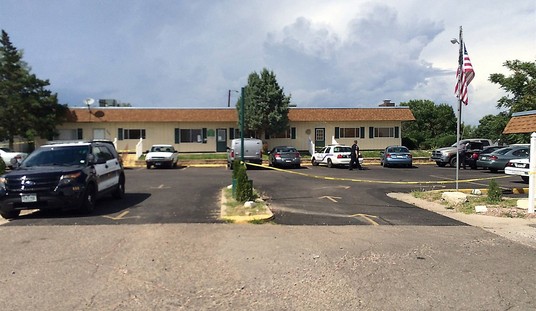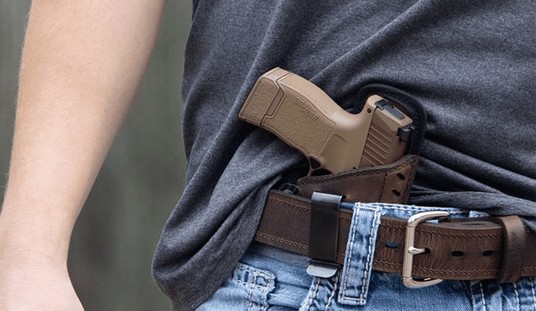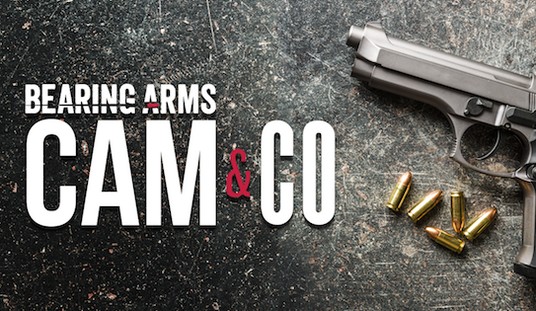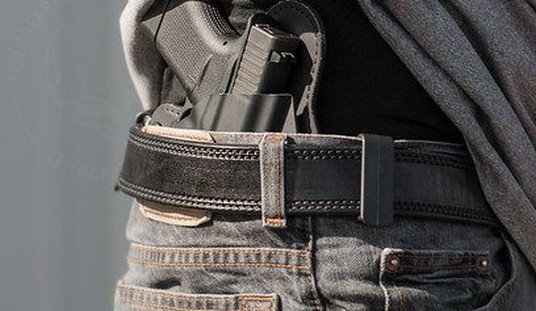 I have been accused of believing the sun rises and sets on the 1911. The pistol has played an important role in my life. The 1911 has been a badge of office, tool of the trade, a lifesaver, a game taker, and a sporting instrument. My hand fits the 1911 and when I wrap my hand around that familiar curve and wood, something says ‘friend.’ 1911 pistols are in use with special teams from the FBI to LAPD SWAT. More importantly to most of us, the 1911 is available for civilian concealed carry. My best pistols are as good as anything used by SWAT teams, but others are as ordinary a 1911 as can be found. I have to admit that a certain amount of my allegiance to the 1911 has to do with a sense of history and emotional attachment. Perhaps even nationalism, although I am not certain I agree with either Hans Kohn or Pazmik Panossian and their ideas on nationalism. In any case my politics run to the ornery western coalition. My main platform plank is the superiority of the 1911. The 1911 is our national pistol and a very good one.
I have been accused of believing the sun rises and sets on the 1911. The pistol has played an important role in my life. The 1911 has been a badge of office, tool of the trade, a lifesaver, a game taker, and a sporting instrument. My hand fits the 1911 and when I wrap my hand around that familiar curve and wood, something says ‘friend.’ 1911 pistols are in use with special teams from the FBI to LAPD SWAT. More importantly to most of us, the 1911 is available for civilian concealed carry. My best pistols are as good as anything used by SWAT teams, but others are as ordinary a 1911 as can be found. I have to admit that a certain amount of my allegiance to the 1911 has to do with a sense of history and emotional attachment. Perhaps even nationalism, although I am not certain I agree with either Hans Kohn or Pazmik Panossian and their ideas on nationalism. In any case my politics run to the ornery western coalition. My main platform plank is the superiority of the 1911. The 1911 is our national pistol and a very good one.
The 1911 has prevailed in innumerable engagements, but modern minds are less accepting and wish to know how and why it worked. The 1911 fits most hands well and features well-placed controls. The 1911 fires a powerful cartridge, but not so powerful most of us cannot control it well. A great advantage of the 1911 is a straight to the rear trigger compression. No need to lay the finger above the trigger and swing it down in an arc as is necessary with the double action first shot pistol. The slidelock safety and grip safety offer a combination of safety features not found on many handguns. When I carry a pistol concealed close to my body, safety is important.
A simple comparison shows the advantages of the 1911. Triple check and unload your Glock, SIG or other long trigger action handgun. Do the same with the 1911. With the 1911 cocked and locked, exert force on the trigger. The other handguns will fire. The 1911 will not. Next, holster either type of handgun while allowing the safety strap of a thumbreak holster–or a suspender or other item of clothing–to enter the trigger guard. The pistol will fire. Do the same test with a 1911 with the thumb safety off. It still will not fire. Do another test. Apply the safety to a Beretta 92 or other pistol with a slide-mounted safety. Try to manipulate the safety quickly. The safety is designed as if speed were not a consideration. The 1911 offers excellent safety and yet is instantly ready for action. The safety falls under the thumb quickly.
When you fire a 1911 on the range, certain advantages are obvious. The trigger is the most noticeable advantage but a low bore axis also gives an advantage. The bore axis is the height of the centerline of the bore above the hand. The lower the bore axis the less leverage for recoil. There is no pivot or backlash in the trigger. The frame angle allows a comfortable locked wrist when firing. Some make the point the 1911 is an old design but improvements in material, fit, finish and features have combined to make the pistol a great carry piece.
The full size Government Model is a great pistol but a bit long and heavy for twenty four hour carry. Accuracy is far from irrelevant in a defensive pistol, but some accuracy may be sacrificed when going to a lighter, more compact pistol. Reliability cannot be compromised. Modification to the slide length and locking lugs allows a compact pistol to function reliably. The first compacts were less than completely reliable with a broad range of ammunition but today the situation is far different. By arranging for a more severe angle in the barrel tilt and changing the locking lugs so that the slide runs further to the rear, the correct key harmonic has been found.
Another problem was aluminum frame battering caused by blunt nose bullets. Ramped barrels have solved this problem. The wide use of quality high visibility sights even on compact pistols has resulted in compact pistols capable of holding their own with many ‘five inch’ guns.
Now, some may say I am old fashioned. They recommend defensive pistols I would not give house room. I have tried alternate pistols to no avail. My rifle is not a Garand but a Bushmaster AR-15, and my shotgun is a FNH SLP, not an old fashioned pump. But the pistol is a modern 1911. The convoluted logic behind adoption of double-action 9mm pistols by police and military is worthy of a foreign film plot. Most are a triumph of the technical over the tactical, with articles lending praise to such pistols giving new meaning to the term pedestrian. After honest evaluation I find the 1911 a head and shoulders above the rest. But which ones are my first choices for carry?
I have on hand a couple of handguns produced by our Filipino allies, the only folks in the Pacific Rim with a respectable handgun heritage. Both are from the same place, but one is marked High Standard and features Novak sights and other additions to make it more useful. The other is a Rock Island Armory compact. It is more GI-like, but works just fine. Each clears leather quickly, is light on the hip, and has proven reliable with quality ammunition. I often use the well made compact ‘officer’s model’ eight-round Wilson Combat magazine with either. I load them with Cor-Bon’s Pow’RBall. These are good handguns, steel frame compacts that are strikingly docile to handle on the range. While the compact .45 is less accurate than a Government Model .45, the compacts are surprisingly accurate. Not only do the 30-ounce pistols handle well, the short slide seems to cycle faster and get back on target more quickly than a GM. It is ZIP ZIP ZIP and you have three holes in the target.
At one time, short slide technology limited 1911s to 230 grain full power loads only. Today we have mastered spring technology. My compacts each have about 1,000 rounds through them without any type of malfunction. Here is an accuracy test at a long twenty five yards with the High Standard Crusader.
Cor-Bon 160 grain DPX 4.5 inches
Cor-Bon 165 grain Pow’RBall 5.0 inches
Cor-Bon 185 grain DPX 4.0 inches
Fiocchi 230 grain ball 4.5 inches
Wolf 230 grain ball 4.25 inches
The pistol is as accurate as the average GI .45. I carry the short .45s in an inside the waistband holster when I cannot conceal a full size 1911. But sometimes I carry a lightweight rendition of the Government Model. The Springfield Loaded Model needs little introduction. The Loaded Model features Novak sights, a beavertail grip safety, a speed safety, excellent checkered grips, forward cocking serrations, a lowered ejection port and attention to detail. The great advantage over previous lightweight pistols is the ramped barrel. The pistol sports a crisp four pound trigger. I have fired several thousand rounds in this pistol with excellent results. The pistol looks great and shoots great. It is a thirty ounce pistol, so recoil is a bit stronger than with the Government Model, but not so heavy as to be a problem. For the first few magazines-and the first shots are what counts-the pistol is as easy to use as any other. After fifty rounds or so stress on the locked wrists loads up, but I most often use lightly loaded handloads for long practice sessions.
I carry the pistol in a Milt Sparks Summer Special IWB or a Ted Blocker crossdraw. The Summer Special is the standard by which all other concealment holsters are judged. The Blocker crossdraw allows the author to set at a restaurant or while driving and have the hand near the handgun. Both make real world fashion sense. A second 1911 that is new to me is the SW 1911 Personal Defense. This is a true Commander length pistol with a 4 1/4 inch barrel and aluminum frame. This twenty seven ounce handgun is truly light on the hip. But unlike early lightweight pistols the 1911 PD one offers modern ergonomic controls and Novak sights. It is quite a pistol, well made and reliable.
The question is how controllable is a lightweight .45 1911? A light frame does not dampen recoil in the manner a steel frame may but the shape of the handle and the use of a modern wide beavertail safety makes for more efficient recoil control. The aluminum frame pistols are manageable but the shooter may grimace at the added stress. The steel frame compact or the aluminum frame compact? That is a personal choice. I am glad to have both but for what it is worth if I were limited to a single 1911 it might well be the SW 1911 PD. Lightweight 1911s will never serve in the competition arena and have limited sporting use. They do what the 1911 was designed to do, give excellent protection to a skilled shooter at close range. The pistols come into action quickly and offer good first shot hit probability and an instant backup shot.
When all is said and done these four handguns make more sense than any other 1911 in my
safe for constant carry.
***
SW1911PD accuracy, 25 yard benchrest
Fiocchi 230 grain ball 3.0 inches
Fiocchi 200 grain XTP 2.0 inches
Springfield LWLM
Federal 230 grain MATCH 2.8 inches
Speer 185 grain Gold Dot 3.25 inches








Join the conversation as a VIP Member